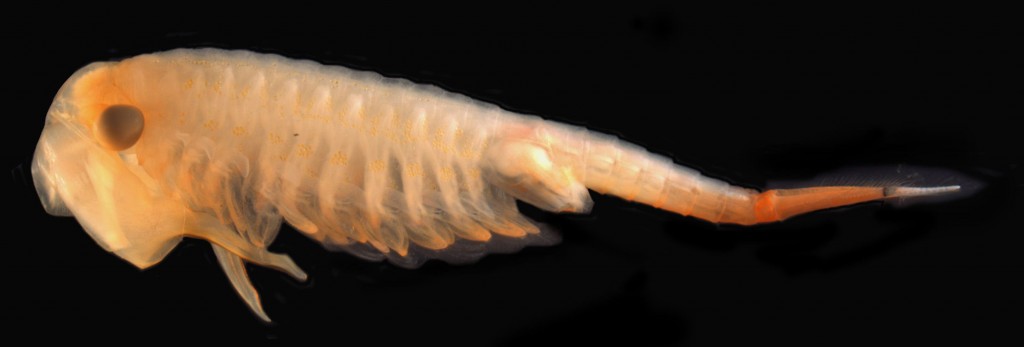

In the late 1950s, the fairy shrimp Eubranchipus holmani appeared to have vanished. The last finding of E. holmani had been published in 1953 by Dorothy Richardson of Connecticut College, and the author had long since passed away.
So when Dr. Eric A. Lazo-Wasem, senior collections manager in the Peabody Museum’s Division of Invertebrate Zoology, happened upon Richardson’s reference to fairy shrimp while perusing a text on freshwater invertebrates, he was more than pleasantly surprised. “For the past 130 years that E. holmani has been known to exist,” Lazo-Wasem explained “there have only been 12 references to the species.”
However exciting Lazo-Wasem’s finding, over the last 50 years the trail to Richardon’s fairy shrimp had gone cold. “The shrimp were mentioned almost like an aside,” Lazo-Wasem notes, “the text claimed that E. holmani were found in Connecticut, but did not cite sources.”
As Lazo-Wasem describes, “I tried to find someone who knew where Richardson had found the specimen.” Luckily, Connecticut College professor of biology, Robert Askins, remembered the finding and still had directions to the pool, which was situated in Groton, CT.
Yet when Lazo-Wasem first went to search for the pool with his assistant, Daniel Drews, neither of them held hope of finding anything. “Fairy shrimp survive through drought-resistant eggs, but otherwise they have no defense mechanisms; they can only live in shallow vernal pools where large predators cannot survive,” Lazo-Wasem explains.
“These pools dry up in about a month and disappear usually by May, while the high season for fairy shrimp is in March.” The scientist and his assistant were there in late April.
To their surprise, the pool was still there, and numerous shrimp were swimming around in it. “We weren’t expecting to collect that day, so we had to buy a kitchen strainer to take some specimens back to the lab,” recalls Lazo-Wasem.
The pool mostly contained the common fairy shrimp, E. vernalis, but amazingly, there were also some E. holmani. “So far we don’t know if there are other pools out there or whether there are microscopic eggs buried around,” says Lazo-Wasem.
Lazo-Wasem is a member of Connecticut’s Endangered Species Review Committee and hopes to place Eubranchipus holmani on the endangered species list that will be updated in 2009. When asked what’s next, he says “We hope to surve an increasing number of places in the Groton pool area to determine the spread of the fairy shrimp.”
He also plans on continuing to collect specimens to monitor the population throughout the vernal pool cycle and plans to gain wetlands regulations to protect the vernal pools.
Through Lazo-Wasem’s efforts, hopefully for this fairy shrimp species the ending will be happily ever after.
